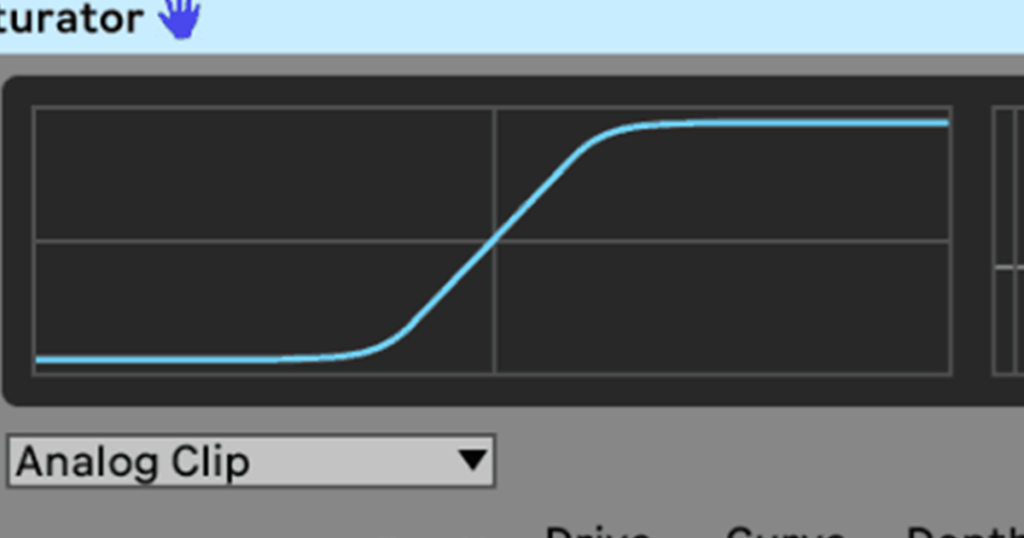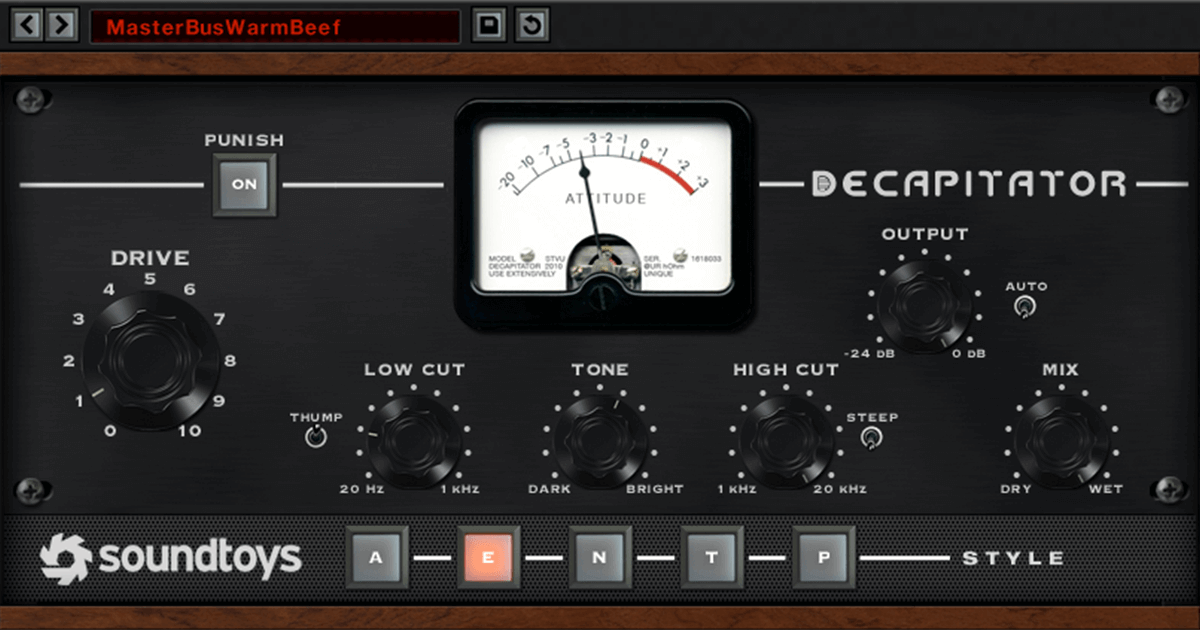What is audio saturation ?
Saturation can be broken down into two basic processes: compression and harmonic distortion. Because of the reduced dynamic range and the addition of harmonics, this combination is commonly referred to as saturation, as the audio material sounds “fatter” and “fuller”. The final product’s sound is primarily determined by the saturation type. Saturation is distinguished by the new addition of previously unincluded frequencies. These frequencies are so-called harmonics. They are harmonic multiples of the fundamental frequency. There is a distinction between even and odd harmonics. Even harmonics are made up of only even multiples (2,4,6,etc.), whereas odd harmonics are made up of odd multiples (3,5,7,etc…). The type of saturation usually determines which harmonics are added.
What is the origin of audio saturation?
Audio saturation originates in the analog world, which is why it is also known as ‘analog warmth’ or ‘analog grit.’ It is the result of electronic hardware, such as a guitar amplifier, becoming overloaded to the point where the audio signal can no longer be reproduced linearly. This was accomplished by boosting the input signal to the point where the output signal could no longer be reliably captured, and the signal was ‘clipped’ at the loudest points. This ‘clipping,’ also known as soft clipping, causes Saturation-specific properties such as reduced dynamic range and harmonic distortion. Originally, three types of saturation were used, all of which are now reproduced in the digital world via plug-ins:
- Tape saturation: Occurs when the magnetic particles embedded in the tape can no longer be rearranged by the tape recorder. This happens when a signal is recorded which is loud enough so that it requires the entirety of these magnetic particles. If there are no more particles to be polarized any further, compression and harmonic generation will begin to occur. This results in odd and even harmonic generation. Tape has the general characteristics of low-frequency distortion, leading to a ‘warm’ perceived sound.
- Tube saturation: Occurs when tube amps are being driven so hard that the electrons can no longer flow from the tube’s cathode to the anode. Depending on how much the tube amp is being driven. Tube saturation produces powerful second-order harmonics, and pleasant even harmonics. Unlike tape saturation, which produces a warm sound by high-frequency attenuation, tube saturation produces a warm sound through low-frequency amplification.
- Transistor saturation: Occurs due to a voltage drop. This voltage drop occurs when the electrical components can no longer sustain the amplitude of the incoming signal. Transistor saturation is the most prevalent type of hardware saturation, since transistors and transformers are far more widespread in electronics than tubes. Transistor saturation encompasses both even and odd harmonics, but is also affected by transistor type. It is often characterized by the generation of mid to high order harmonics, which means that the signal it distorts sounds brighter and more defined. Transistor saturation in general increases the audibility of the signal it distorts.
What are harmonics?
Aside from sine waves, each tone has a fundamental and sound-specific overtones. They are responsible for determining the timbre of a sound or instrument, for example. Because there are almost no pure sine waves in nature, and because we are constantly surrounded by more complex sounds, our hearing has become accustomed to overtones. These overtones, as research has long demonstrated, play a huge role in our perception of tones. The phenomenon of missing fundamental was already described at the end of the 19th century. Accordingly, the human ear can determine a tone based on the overtones, even if the fundamental tone isn’t even included (Seebeck, 1843). This explains why saturation is so important and why rich sounds with overtones sound so good to our ears. The arrangement of the overtones also plays an important role. There are odd and even overtones. Depending on their distribution, sounds sound more dissonant or consonant to us.

How does Saturation work?
Audio saturation fundamentally alters the waveform of an audio signal, and can thus be described as a type of wave shaping. I’ll try to explain how the waveform changes in a simplified manner.
As stated earlier, the waveform is not reproduced linearly during the saturation process. Over driving the devices prevents the highest peaks of the audio signal from being reproduced. Using a sine wave as an example (see figure), the sine wave’s inflection points are cut off as saturation increases. As a result, the sine wave begins to resemble a square wave, giving rise to upper harmonics. A square wave is made up entirely of odd harmonics in addition to the fundamental sine wave. Because sounds naturally have far more complex frequency distributions and are made up of more than just sine waves, much more complex harmonics are produced, however this is a simplified representation of the process to help you grasp the fundamental concept.

What should be considered when using saturation?
Saturation curve
The amount of saturation is visually depicted by a saturation curve in many current saturation plugins. This is generally represented graphically, with the x-axis indicating the input level and the y-axis showing the output level of each point on the wave. Each point on the wave is so multiplied by the saturation curve and rescaled. Therefore the saturation curve depicts how the original signal is altered.
Symmetrical curves, in which the left side is opposite the right side, are frequently utilised. They are also known as odd symmetric curves, since they can be expressed as equations with odd powers of x. As a result, the added harmonics are also odd, making it sound slightly dissonant to our hearing. Depending on the desired effect, choose the appropriate type of saturation curve, if the plugin has one, to determine whether even or odd harmonics should be generated and how strong the wave shaping effect will be applied. Some plugins also provide a knob instead of a graph to control the type of harmonics that are generated.

Volume
Saturation is a non-linear effect, which means that the frequency distribution prior to the effect is essential. The saturation effect increases exponentially with increasing loudness, hence the input volume is crucial. To hear the saturation effect, a specific threshold must be reached. It is necessary to concentrate on good gain staging in this situation. Some plugins provide an automatic gain control that allows them to adjust the output signal automatically. If a plugin lacks this feature, make sure the output signal is not louder than the input signal. Otherwise, because of the additional loudness, it is difficult to compare how the saturation effect actually sounds.
Order of use
The order in which saturation effects are applied impacts how they function, much like the frequency distribution does. Quite distinct effects may result depending on whether saturation is applied before or after other effects, like reverbs or equalizers. For instance, applying the EQ either before or after the saturation has a considerable impact. Because of non-linearity, raising a frequency before saturation has a proportionately larger influence on the elevated frequency than on the other frequencies. Even if the frequency is being lowered again afterwards, the generated harmonics give the appearance that the frequency is more present than before.
How is saturation applicable for techno production?
Audio saturation is particularly important in the production of techno music. Because techno music is supposed to sound fat in the end and should sound well on club systems, you can truly apply some saturation to every element in the production step. This results in a ‘fat’ compressed mix in the end. Not only on single tracks, but also on mix busses and the master track, saturation is particularly useful for techno music production. Here is a quick rundown of the aspects that benefit the most from saturation in techno production:
Kick drum
When discussing saturation in techno, the kick drum is certainly the first element that comes to mind. Depending on the genre, saturation can be pretty excessive here. There are no limitations, from light saturation that simply adds character to massive distortion that entirely transforms the sound. The 909 samples, in particular, are excellent at being destroyed while still sounding fantastic. In my experience, when there is a lot of distortion, some energy is lost in the low frequencies. This is why multiband distortion plugins are ideal for this purpose.
Synth / lead
It’s easy to see why saturation works so well with synth and lead sounds. The lead sounds should be crunchy and present in the mix. This is achievable with moderate to strong saturation. You can’t go wrong here, either. It performs its purpose as long as it sounds acceptable, and the sound is not completely distorted. It is, of course, a style concern how the sounds should sound, but generally speaking, especially lead sounds in techno are saturated to the maximum. Stronger saturation types that are close to wave shaping are also appropriate for creating a distinct lead sound. Saw-tooth style leads, in particular, sound fantastic with decent saturation.
Hi hats
Hi hats and percussions are crucial in a techno track and add greatly to the drive. That’s why adding some saturation and distortion to the hi hats is a good idea. You can experiment with the position of the saturation in the effect chain to make the hi hats more present in the mix and bring them to the front. For example, the hi hats become even more sharp and prominent when saturation is added after the reverb.
Master channel
It’s worth applying saturation to the master track to give it a little extra grit and punch. Because of the compressing impact of saturation, the entire mix is glued together and appears fuller. Through harmonic distortion, it also gives the track a unified character, which is similar to subtle mastering. On the master channel, however, more subtle forms of saturation are ideal because you don’t want to disrupt the track’s balance. A minor tape saturation that provides some warmth to the music is common in the techno genre, for example.
Conclusion
Saturation is a tremendously effective tool that is also relatively simple to apply. In comparison to Compression, where you have to be very careful about what parameters you use, you nearly can’t really go wrong with Saturation. You’re good to go as long as it sounds good to you. Because of the compressing property and the addition of harmonics, it is a vital tool in the techno genre if you want to produce rich sounding tunes. It helps immensely to the track sounding professional if used systematically in the sound design stage on individual tracks, as well as in the mixdown/mastering stage on mix busses or the entire master. Because, at the end of the day, we all want our songs to sound fat and banging, including saturation in your toolbox surely doesn’t hurt.







